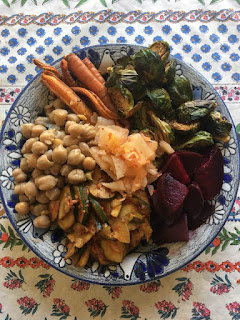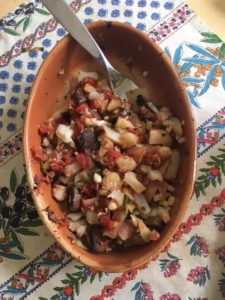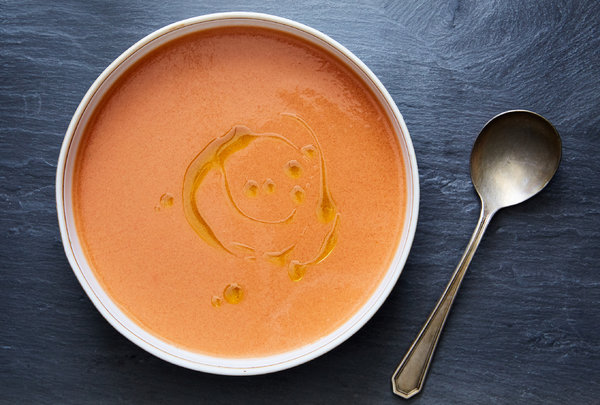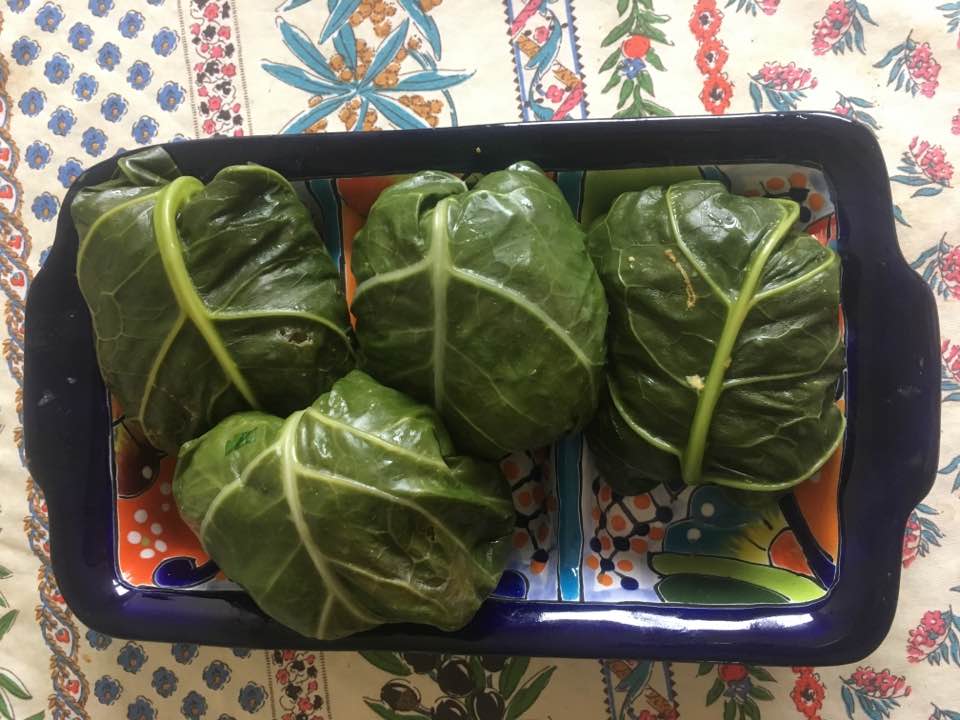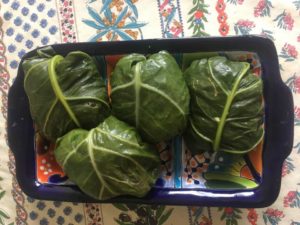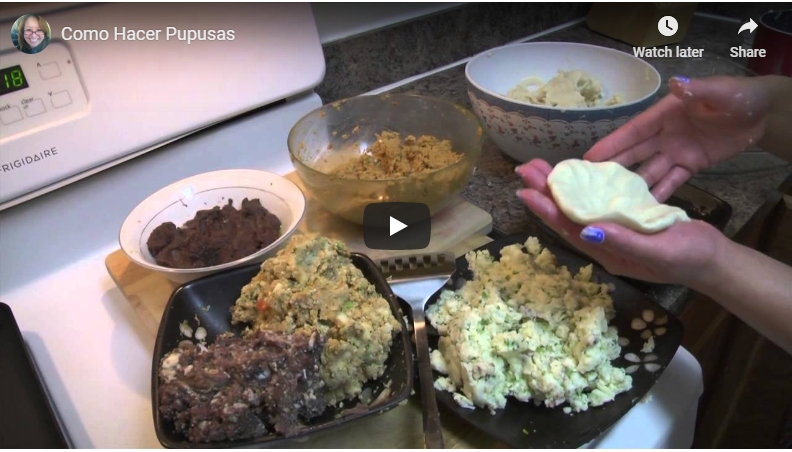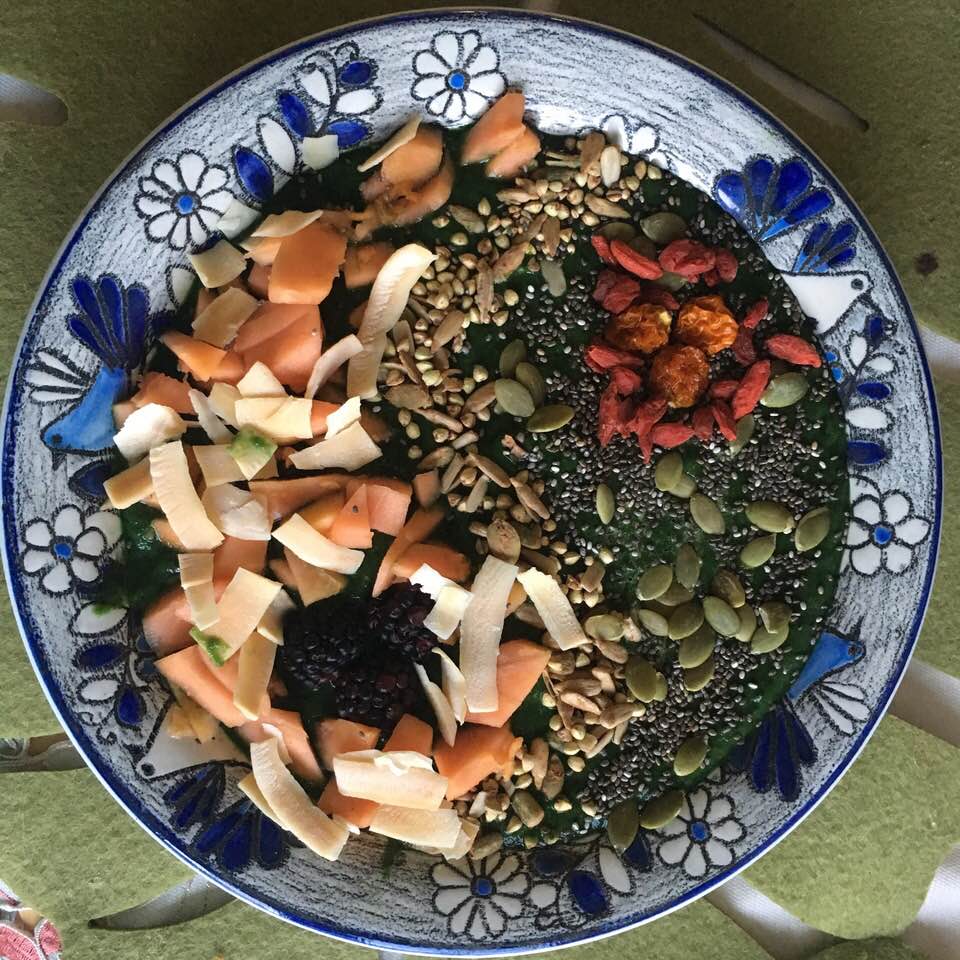You already know I’ve been very enthusiastic about Buddha bowls lately, right? Exhibit A; Exhibit B. Well, here’s Exhibit C, just to give you more inspiration to concoct your own. The toppings are incredibly easy to make:
Beets: I steam them in the Instant Pot for eight minutes and then cut into bite-sized pieces.
Carrots and Brussels Sprouts: This time I halved the sprouts, cut the carrots into matchsticks, and rubbed both vegetables with a little bit of mojo de ajo that I had lying around from having made Mexican food earlier in the week. I then placed them on a silpat mat on a baking sheet and sent them into the oven, at 350 degrees, for about 25 minutes.
Zucchini in Tomato Sauce: I had a few spoonfuls of tomato sauce lying around from a nice ravioli dinner yesterday. I thinly sliced up two large zucchini and sauteed them in the sauce until tender.
Chickpeas: I could’ve gotten fancy with this and baked them with spices, but this time I simply spooned cooked chickpeas with some fresh ground black pepper.
In the center I have a few spoonfuls of kimchi.
And the whole thing sits atop a layer of quinoa cooked in vegetable broth.
Which is another illustration of the principle: if there’s an abundance of colorful, wholesome ingredients, you don’t have to be particularly fancy with the preparation of each topping – just place them nicely in the bowl and you’ll have a fabulous lunch.


